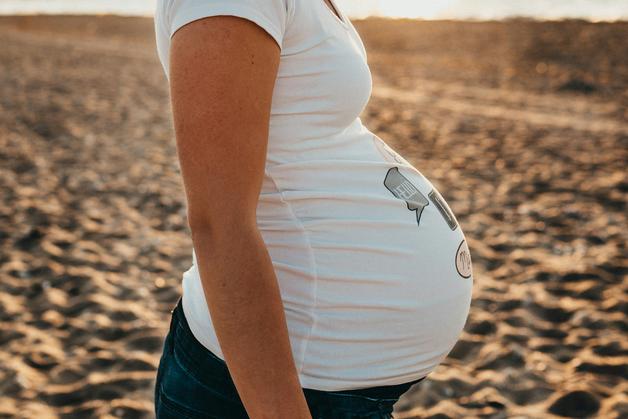The term « listeriosis pregnancy » might sound arcane at first glance, yet for many expectant parents, it becomes a source of genuine unease—the invisible threat lurking behind a seemingly harmless meal or a silent evening snack. Have you ever paused, fork in hand, and wondered if your favorite soft cheese or salad could pose a risk? Parents naturally want the best for their child, but the quest for security is often laced with anxiety and confusion. With symptoms that blend surreptitiously into the tapestry of normal pregnancy discomfort, listeriosis pregnancy can quietly slip through the net. What do you need to know? Which foods are most hazardous, why is the fetus particularly vulnerable, and what steps can one take—practically and realistically—to ensure safety without succumbing to constant worry? Here, scientific explanations mix with pragmatic tips, aiming to empower every caregiver—whether first-time parent or seasoned veteran—with the knowledge and confidence to act wisely, and calmly, throughout this delicate time.
The Silent Intruder: What Every Parent Should Know About Listeriosis Pregnancy
Listeriosis pregnancy is not just a medical term—it’s a living reality for a small, but significant segment of expectant parents. The culprit, Listeria monocytogenes, is no ordinary germ. Because it flourishes at refrigerator temperatures and survives where most bacteria perish, even well-stored foods can be a source of infection. Unpasteurized dairy, soft cheeses (think Brie, Camembert), processed deli meats unless thoroughly cooked, and refrigerated smoked seafood—it’s a long list. And it doesn’t end there: pre-packaged salads, raw sprouts, and even contaminated fruits or vegetables can harbor this persistent organism.
What makes listeriosis pregnancy particularly insidious is the way pregnancy alters the immune system. This essential adaptation, designed to protect the fetus, paradoxically opens the door to infections rarely problematic for non-pregnant adults. Expectant mothers are estimated to be 12 to 18 times more likely to develop listeriosis pregnancy than those not carrying a child. The numbers may seem small—only a few dozen cases per year in some countries—but the consequences can be outsized.
You may ask: why such a dramatic impact? The simple answer: If the listeria bacteria slip through the maternal defences and cross the placenta, the tiny developing life inside can suffer grave harm.
Symptoms: When “Just a Cold” Signals Something More
The early warning signs are maddeningly subtle. Fatigue, muscle aches, a mild fever, occasional digestive upset—who, in pregnancy, hasn’t experienced these? Listeriosis pregnancy can be chameleon-like: blending with everyday discomforts, deceiving both parent and provider. In rare cases, symptoms intensify to include chills, headaches, or even stiff neck if meningitis develops—a medical emergency.
Complications can take many forms and depend heavily on when the infection occurs:
- First trimester: The risk is highest for miscarriage or early pregnancy loss.
- Second trimester: Preterm birth, infection of the placenta, or fetal demise may occur.
- Third trimester: Babies exposed late may be born early, with infections ranging from sepsis (a body-wide inflammatory reaction) to meningitis (infection of the brain’s lining).
- Up to a third of infants surviving listeriosis pregnancy can later struggle with neurological impairments—ranging from intellectual disabilities to motor problems and seizures.
The incubation period wriggles unpredictably, from a few days to up to ten weeks. This means even a half-remembered meal from weeks before could, in theory, be responsible for symptoms appearing today.
Diagnosis and Immediate Steps: Separating Fear from Action
Ask yourself: Have you eaten high-risk foods recently? Is your temperature refusing to budge below 38°C (100.4°F), or are you grappling with muscle aches, unexplained tiredness, abnormal contractions? While panic serves no one, dismissing these signs as “just pregnancy stuff” can be costly.
If listeriosis pregnancy is considered, medical professionals usually order blood cultures—the only reliable method to unmask Listeria monocytogenes. Occasionally, other samples may be checked (such as spinal fluid, particularly if there are neurological symptoms). Yet time is of the essence: waiting for certainty isn’t always wise, and treatment often begins as soon as suspicion is strong.
Treatment Strategies: Science and Vigilance Side by Side
Luckily, prompt antibiotic therapy transforms a fearful situation into a manageable one. Treatment typically involves amoxicillin or ampicillin (sometimes combined with a second antibiotic, gentamicin), delivered intravenously, and continues for no less than two weeks. For parents allergic to penicillins, cotrimoxazole may step in, though careful supervision is warranted.
The journey does not end once therapy starts. Ongoing fetal monitoring is key—multiple ultrasounds, regular check-ins, and laboratory tests become the new routine. After birth, the placenta and amniotic fluids might be examined to detect any newborn infection. When handled swiftly, listeriosis pregnancy often leads to healthy outcomes; delays, on the other hand, amplify the risk of lasting harm.
Parents frequently ask if a single mouthful of risky food demands action, especially in the absence of symptoms. Current evidence suggests that antibiotics for “exposure only” without symptoms are not routinely beneficial, but increased observation and follow-up may be wise, especially if additional risk factors are present.
Prevention: Practical Steps for Everyday Life
You might be wondering: must all favorite foods disappear from your shopping basket? Fortunately, prevention doesn’t have to mean deprivation. Instead, it pivots on food safety and simple, consistent habits.
- Skip all unpasteurized dairy and soft cheeses: opt for products bearing clear “pasteurized” labels.
- Avoid cold deli meats, smoked seafood, and raw sprouts unless thoroughly cooked or heated.
- Cook leftovers and ready meals to at least 70°C (158°F)—and check your fridge runs at or below 4°C (40°F).
- Wash all produce under running water, scrubbing even items from personal gardens.
- Be vigilant about use-by dates. Foods kept too long, especially at unsafe temperatures, invite trouble.
- Store raw and cooked foods apart. Clean kitchen surfaces, knives, and your refrigerator regularly.
- Practice excellent hand hygiene: before and after meal prep, after gardening (where soil may harbor listeria), and especially after handling raw foods.
For parents with chronic illness or immunosuppression, these precautions bear even greater importance. When traveling, lean into cooked dishes, bottled water, spotless utensils, and avoid buffet or street food where safety cannot be guaranteed.
Staying Informed: Calm without Complacency
The pace of food recalls related to listeria can be dizzying. Check regularly with official pages or subscribe to recall alert systems—this takes seconds and can forestall a world of worry. True, no system is infallible, but heightened awareness empowers you, without tipping into alarmism.
Feeling overwhelmed? Perfectly understandable. Many parents recoil at lists of “forbidden” foods, worried about a single slip. Instead, focus on developing confidence: build grocery strategies rooted in what’s safe, rotate reliable recipes, and seek balance. Over time, mindfulness morphs into second nature, anxiety dissolves into practical action, and family meals regain their joy and spontaneity.
Remember, midwives, pediatricians, pharmacists, and digital tools all stand ready with reliable, non-judgmental advice whenever a question or concern emerges. Open communication—whether about past exposures or sudden symptoms—opens the path to reassurance and, when necessary, fast intervention.
Key Takeaways
- Listeriosis pregnancy remains rare but demands focus: a tiny bug with potentially enormous consequences for developing babies.
- Listeria monocytogenes can persist in foods that look and taste normal. Peel, wash, cook, and store wisely.
- Symptoms in pregnancy often masquerade as everyday malaise—keep an eye out for persistent fever, muscle aches, or digestive changes.
- Timely medical advice and early intervention transform outcomes. When in doubt, reaching out is always justified.
- Kitchen hygiene, safe storage, and smart food choices—these small routines build a strong wall against listeriosis pregnancy.
- Resources abound: medical professionals, health authorities, and modern digital aids all provide support and real-world solutions tailored for each family.
- Trust accurate sources, keep questions flowing, and allow scientific guidance to underpin every decision.
- For personalized health checklists, tailored reminders, and up-to-date advice at your fingertips, parents can download the Heloa app for free child health questionnaires and expert support.
Each step taken with listeriosis pregnancy knowledge transforms anxiety into assurance—a gift not just for your baby, but for yourself.
Questions Parents Ask
Can listeriosis during pregnancy be transmitted to the baby during birth?
Listeriosis can unfortunately be passed from mother to baby during pregnancy or at the time of delivery, even when the parent feels fine or has only mild symptoms. The bacteria have the ability to cross the placenta and can sometimes reach the baby just before birth. This can result in infections for the newborn, which may need immediate medical attention. Rassurez-vous, a close follow-up by healthcare professionals and early care after birth allow for quick management, greatly improving the outlook for your little one.
How long after exposure to listeria might symptoms appear in pregnancy?
The window between eating contaminated food and noticing symptoms can surprise many parents. For listeriosis, symptoms might take anywhere from a few days up to several weeks to show up. This unpredictability explains why it’s sometimes difficult to link an illness to a certain food. If you have eaten a food considered at risk and have concerns, you can always seek medical advice—even if it’s been weeks since the exposure.
Are there any foods that pregnant women can enjoy safely to avoid listeriosis risk?
Absolutely, you can still enjoy a varied and satisfying diet. Many dairy products, cheeses, meats, and fish are perfectly safe if they are made with pasteurized milk, cooked thoroughly, or served steaming hot. Freshly prepared fruits and vegetables that are washed carefully are also a good choice. By choosing foods with clear labeling and preparing them safely at home, you can eat with confidence. And if ever in doubt, don’t hesitate to ask your healthcare team for reassurance or clarification—there are always options for tasty, worry-free meals!

Further reading :









